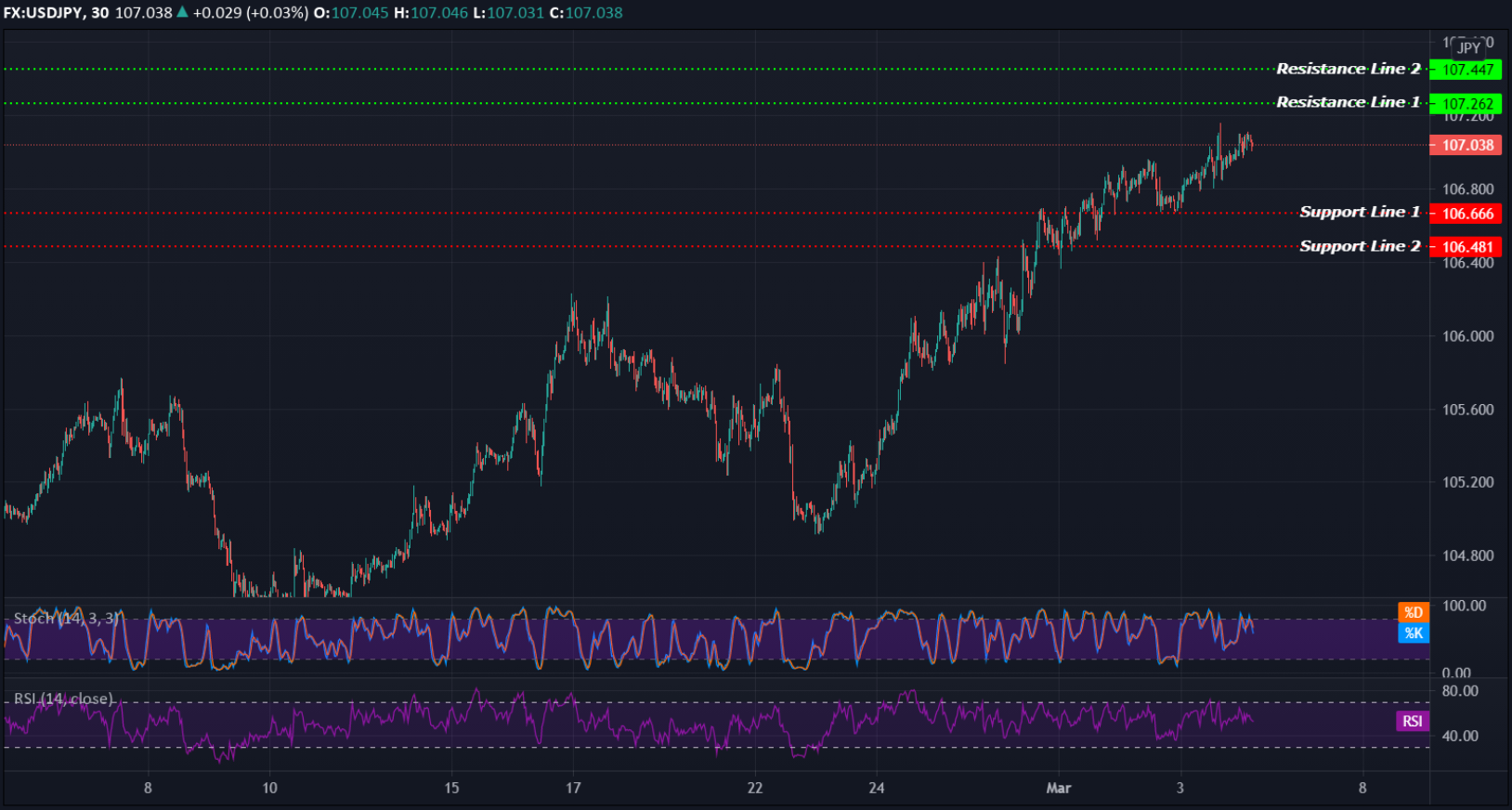EQUITIES
Asia-Pacific markets were lower on Thursday. In Japan, the Nikkei 225 led losses among the region’s major market, declined -2.78%, followed by the Hong Kong’s Hang Seng index at -2.55%, and the Shanghai composite at -1.58% lower. The South Korea’s KOSPI slipped -1.67%, the Australia’s S&P/ASX 200 shed -1.59%, and the India’s S&P BSE Sensex index down at -1.56%. Meanwhile, the Singapore’s Straits Times index, against all odds, at 0.18% higher.
Overnight, the tech-heavy Nasdaq Composite dropped 2.7% to close at 12,997.75. The S&P 500 fell 1.31% to 3,819.72 while the Dow Jones Industrial Average declined 121.43 points to 31,270.09.
OIL
Oil prices were on the defensive as investors await the OPEC+ output cut decision later today. The Brent crude futures traded to $64.43 per barrel, while the U.S. crude futures at $61.59 per barrel.
Overnight, the Brent close at $64.08, while WTI futures ended at $61.28 per barrel, jumping more than 2%.
CURRENCIES
Optimism over the U.S. economy boosted the greenback against a basket of currencies, with the dollar index up 0.13% at 91.06.
The 10-year U.S. Treasury yield rose overnight, last sitting at 1.4773%.
Bond yields in Asia-Pacific also rose, as the yield on the Australian 10-year bond advanced to 1.776% while the 10-year Japanese government bond’s yield also jumped to 0.135%.
Investors now await Fed Chair Jerome Powell's speech before a virtual Wall Street Journal Jobs Summit at 1705 GMT, for clues on the outlook of the central bank's monetary policy.
GOLD
Gold prices recovered from a near 9-month low hit in the previous session, although higher U.S. Treasury yields continued to weigh on the non-yielding bullion's appeal.
Gold spot edged higher to trade at $1,712.50 an ounce, while slipped around $1,707.90 per ounce for gold futures. Previously closed at $1,710.70 and $1,715.80, respectively.
ECONOMIC OUTLOOK
Shares in Asia-Pacific slipped in Thursday trade as they braced for a new bout of volatility in equities and bond following a rise in U.S. treasury bonds yields again.
Tech shares in Asia trade is watched after their counterparts stateside fell overnight, broadly over a possible correction, as concerns about asset bubbles and a surge in inflation continued to play against progress in fighting the coronavirus.
The U.S. Senate delayed the start of debate on a $1.9 trillion COVID-19 relief bill until at least Thursday.
In oil developments, OPEC and OPEC+ are expected to convene via videoconference on Thursday to discuss how to manage supply to the market.
While weekly report from EIA showed: Crude inventories rose by 21.6 million barrels, the largest 1-week increase ever, in the week to Feb 26 to 484.6 million barrels. Gasoline inventories fell to 243.5 million barrels, while distillate stockpiles fell by the most since 2003 to 143 million barrels.
To date, number of confirmed worldwide cases for COVID-19 pandemic has surpassed 115.173 million, recording more than 2.560 million fatality globally.
TECHNICAL OUTLOOK
[USDJPY]
Important Levels to Watch for Today:
- Resistance line of 107.262 and 107.447.
- Support line of 106.666 and 106.481.
Commentary/ Reason:
The dollar extends its climb against the Japanese yen for second day, pushed to a level not seen since July. The USD/JPY on Thursday stood at 107.038.
The Japanese yen hit a 7-month low on the dollar as hopes that vaccine distribution and more government stimulus will drive the U.S. economy into a solid rebound lifted the greenback and benchmark Treasury yields. The spectre of higher U.S. bond yields likely will undermine the low-yielding, safe-haven assets such as the yen.
Comments by BoJ policymaker on Wednesday also weighed on yen, as he said that the BoJ should manage 10-year government bond yields within the current range of 0.2 percentage points on either side of its zero target. He also added that lowering interest rates further won't harm the lending functions of financial institutions. Kataoka's comments were bearish for the yen as they diminished speculation the central bank would widen its yield range.















